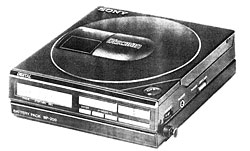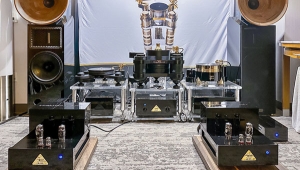| Columns Retired Columns & Blogs |
Still decent sound through my AKG K-271s or my Sennheiser HD-380s. It beats watching Flea Market Flip, Horders, or Walking Dead reruns which my wife is into these days. Chip and Joanna are pretty good at flipping houses. I know...a sad life.
 There's a race on between Sony and Matsushita, to determine who can build the smallest battery-operated CD player with the most features. Sony currently holds the lead with its second-generation D-7 ($300), about 30% smaller than the first "pocket" CD, the D-5. Most of the reduction is in height; both players have a horizontal cross-section only slightly larger than the CD itself. The illusion of smallness is further enhanced by an angled front panel with beveled edges.
There's a race on between Sony and Matsushita, to determine who can build the smallest battery-operated CD player with the most features. Sony currently holds the lead with its second-generation D-7 ($300), about 30% smaller than the first "pocket" CD, the D-5. Most of the reduction is in height; both players have a horizontal cross-section only slightly larger than the CD itself. The illusion of smallness is further enhanced by an angled front panel with beveled edges.





































